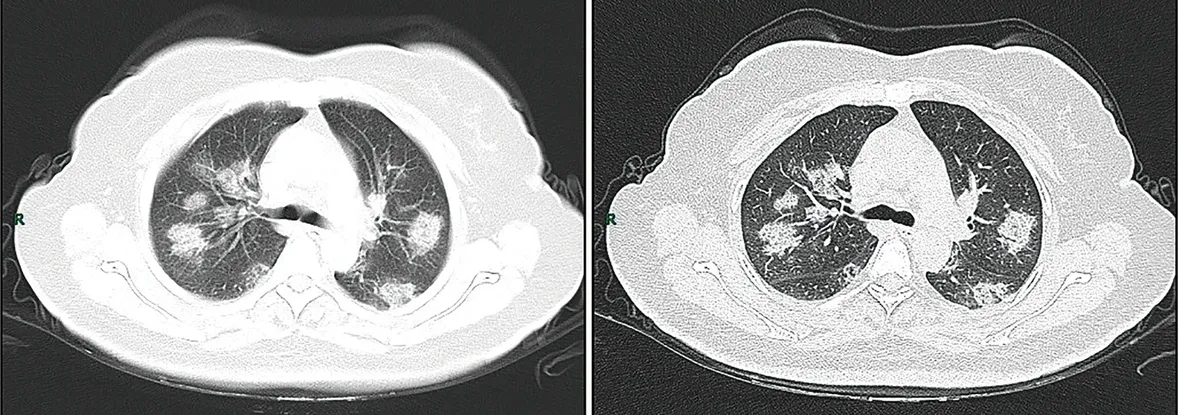ARTICLE SUMMARY:
The European Commission stepped up efforts in the past week to reduce regulatory barriers to its COVID-19 medtech response with emergency guidelines for notified bodies and its formal MDR delay proposal. Also in this week’s Pathways’ Picks: pandemic policy updates from the US, Australia, Brazil, and Canada.
Europe’s latest actions to rethink audit requirements and delay the Medical Device Regulation in the face of coronavirus lead this week’s Pathways’ Picks. We also brief you on key policy updates from elsewhere around the globe.
“Alternative Extraordinary Measures” in Europe
The European Commission followed through on its promise to propose a one-year delay to the Medical Device Regulation with a formal plan issued April 3. If approved by legislators, the plan would move many elements of the MDR “date of application” to May 26, 2021, to relieve pressure and ensure needed devices are available in the response to COVID-19.
That means notified bodies may be switching gears to address clients’ compliance needs under the legacy Medical Device and Active Implantable Medical Device Directives to make sure products can stay on the market, after diverting more and resources to prepare for MDR in recent years. Those efforts are complicated by pandemic social-distancing requirements that run up against the onsite audits that are central to EU oversight. The Commission issued new guidance April 8 to help resolve that conflict, listing four situations where “alternative extraordinary measures,” including postponed audits, remote audits, and relying on global Medical Device Single Audit Program audits, can be accepted:
- Surveillance audits;
- Re-certification audits;
- Change-notification audits; and
- Audits needed when a company changes notified bodies.
The guidance urges notified bodies to perform a risk analysis on whether a postponement can be justified or if alternative techniques like a remote audit are appropriate. In some cases, particularly for re-certifications, the Commission recommends that a condition be established that remote audits will be followed up by onsite audits when public health circumstances allow.
One situation where these alternative audit measures will generally not be appropriate, the Commission says, is to support initial device certifications or certification scope extensions. That will mean delays for many new devices. But the guidance leaves flexibility for devices needed to support emergency response. “Notified bodies may apply these extraordinary measures on a case-by-case basis for such audits in cases where devices are considered relevant to ensure medical care, especially if clinically necessary during the period of COVID-19 restrictions,” the guidance states.
Delay proposal details. Meanwhile, the EU medtech community is digging through the details of the recent MDR delay proposal, while closely watching the Parliament and the Council, which need to approve it. By and large, the proposal simply shifts any requirements that were set to kick in this May to exactly one year forward. Of note: many makers of existing devices have planned on relying on a grace period that allows non-expired pre-MDR certifications to remain active up through 2024—that backstop grace-period deadline would remain unchanged by this proposal. In addition, the proposal does nothing to move the May 2022 go-live date for the new IVD Regulation.
The proposal would actually accelerate one section of the MDR that creates a path for the EU to adopt, Union-wide, an exemption granted to a device by an individual member state, allowing COVID-19 emergency access to a needed device without a standard conformity assessment. Also last week, the Commission release a Q&A-style guidance document affirming that COVID-19 is a justified public health emergency, thus enabling EU member states to allow needed devices on the market in the absence of a conformity assessment.
Avoiding an expert panel. Meanwhile, the EU is still rolling out policy updates intended to support the MDR once it does take effect. On April 6, for instance, Europe’s Medical Device Coordination Group updated a guidance from March 2019 to detail how a company should go about proving to its notified body that its high-risk device has been modified from a previously certified version to comply with the MDR. Based on that determination, the device would qualify for an exemption from an extra data review by a centralized European “expert panel.”The centralized scrutiny procedure is one hot-button area of reform in the EU MDR, where, for the first time in Europe, review of clinical data for certain class III and IIb devices could go beyond the notified body.
 Global Pandemic Policy Roundup
Global Pandemic Policy Roundup
The MDR delay proposal is the most expansive medtech policy impacted by COVID-19. But it is far from the only one. Government agencies in multiple countries facing oncoming virus surges continue to roll out new temporary frameworks to clear bottlenecks for needed devices. Here is a look at some from the past week:
FDA steps. The US agency has recently been averaging about one new or updated guidance document per day waiving regulatory requirements for devices needed to support COVID-19 patients and continued healthcare in a manner that reduces the risk of spreading the disease. In recent days, FDA mapped out allowances for modifications to devices used for extracorporeal membrane oxygenation and cardiopulmonary bypass (ECMO) to help treat patients with sudden acute respiratory syndrome and for infusion pumps. The agency also penned one guidance allowing sales of non-510(k)-cleared electronic thermometers, and another one offering leeway for remote ophthalmic assessment and monitoring devices to use in lieu of in-person checkups. FDA issued some general guidelines April 4 for device companies to protect their employees’ health. And it extended due dates further for companies that need to respond reviewer questions for pre-market submissions placed on hold.
Australia actions. Australia’s Therapeutic Goods Administration, meanwhile, issued new guidelines April 8 for companies that want to employ 3D printing to fashion needed devices including ventilator valves, masks, and gowns. TGA also issued a new exemption policy allowing sales of domestically-made ventilators that meet certain specifications but have not been listed in the Australian Register of Therapeutic Goods (ARTG) to Australian hospitals to meet COVID-19 demands.
Canadian shortage prep. Canada’s Ministry of Health recently approved an interim order requiring device firms to report oncoming and resolving product shortages to the government under time deadlines.
In Brazil. Device firms selling products in Brazil can now update product inserts, including instructions for use, digitally via the government’s online portal, Brazil’s ANVISA regulatory agency announced April 8. That is among several new digital services the agency is offering to the regulated the community, adding to the more-than-60 services made digital over the past year, reducing the need for face-to-face interactions, ANVISA said. The agency also issued an FAQ document (link in Portuguese) April 3 explaining its recently implemented streamlined approval policy for COVID-19 medical devices.
 More to Watch
More to Watch
What about imaging? Medical imaging equipment is one device category that is central to COVID-19 assessment and care but has not yet been subject to any emergency FDA coronavirus policies. But imaging device makers say some adjustments would help ensure needed technologies are available. The Medical Imaging & Technology Alliance recently wrote the agency a letter asking for temporary review prioritization for imaging devices that play a role in COVID-19 care pathways, and, in particular, more flexibility for manufacturers to convert devices from static to mobile designs. MITA also says FDA should maximize use of the third-party review program and expedite imports of needed imaging devices, among other recommendations.
Small-biz loan barriers remain. Small companies are running into an array of complications in accessing expanded Paycheck Protection Program loans enacted in the most recent coronavirus stimulus bill (CARES Act). Venture-backed device firms are looking for the federal government to waive the Small Business Administration’s so-called “affiliation” rules that count equity investors against headcount limits to qualify for the loans. But in an FAQ document issued April 6, the SBA declined to do so. To overcome affiliation rules, a minority shareholder must “irrevocably “ waive or relinquish its rights to prevent a quorum or otherwise block action by a company’s board, SBA said.
DPA orders flow. After weeks of controversy and debate about President Trump’s unwillingness to leverage the Korean War-era Defense Production Act to order production of certain medical devices, the White House has employed the DPA at least three times recently, including a March 27 order for General Motors Company to make ventilators; an April 2 order to “facilitate the supply of materials” to ventilator manufacturers GE Healthcare, Hill-Rom Holdings, Medtronic plc, ResMed Inc., Philips, and Vyaire Medical Inc.; and a same-day order for 3M Company to prioritize federal contracts for N95 respirators. The device industry has expressed support for measures that will help build the emergency supply chain, but is worried about the potential for DPA orders to restrict needed supplies from other countries.
CMS looks at wound-healing tech. The Medicare agency has agreed to reconsider whether “coverage-with-evidence-development” conditions established in 2012 are still needed for autologous platelet-rich plasma treatment for diabetic foot ulcers. CMS opened a national coverage analysis April 3 in response to a request from Nuo Therapeutics seeking expanded coverage for its Aurix PRP system, 510(k)-cleared in 2007. Comments on the analysis are due May 3, and a proposal from CMS is expected in October.
 Dates to Remember
Dates to Remember
April 15. FDA will hold its next virtual town hall for developers of COVID-19 diagnostic tests.
April 16. FDA will host a webinar on its March 11-issued final guidance on the enhanced Third-Party Review Program for 510(k)s.
![]() Trial MyStrategist.com and unlock 7-days of exclusive subscriber-only access to the medical device industry's most trusted strategic publications: MedTech Strategist & Market Pathways. For more information on our demographics and current readership click here.
Trial MyStrategist.com and unlock 7-days of exclusive subscriber-only access to the medical device industry's most trusted strategic publications: MedTech Strategist & Market Pathways. For more information on our demographics and current readership click here.
*End of article*

